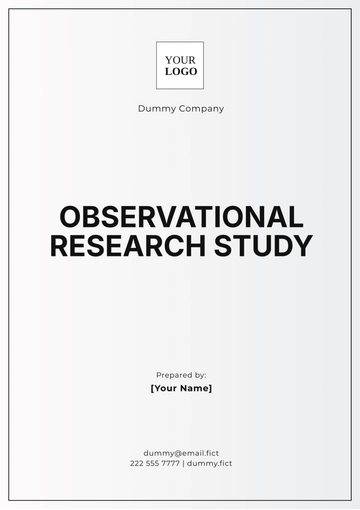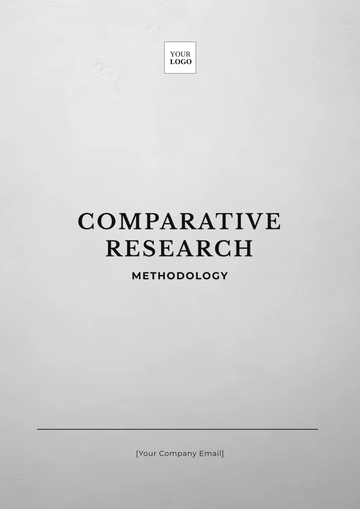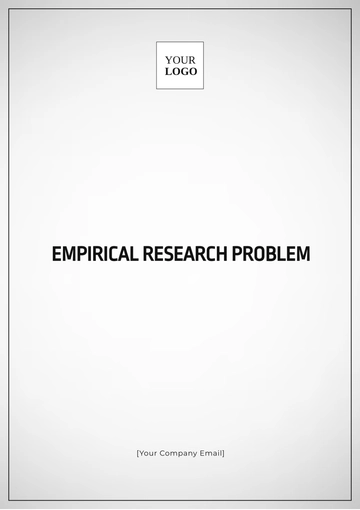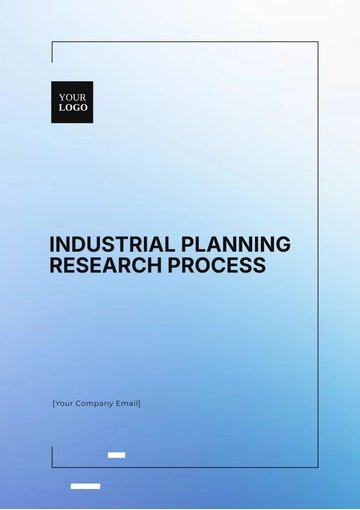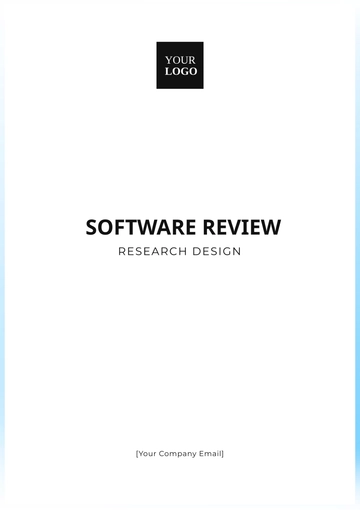Free Detailed Financial Cost Research
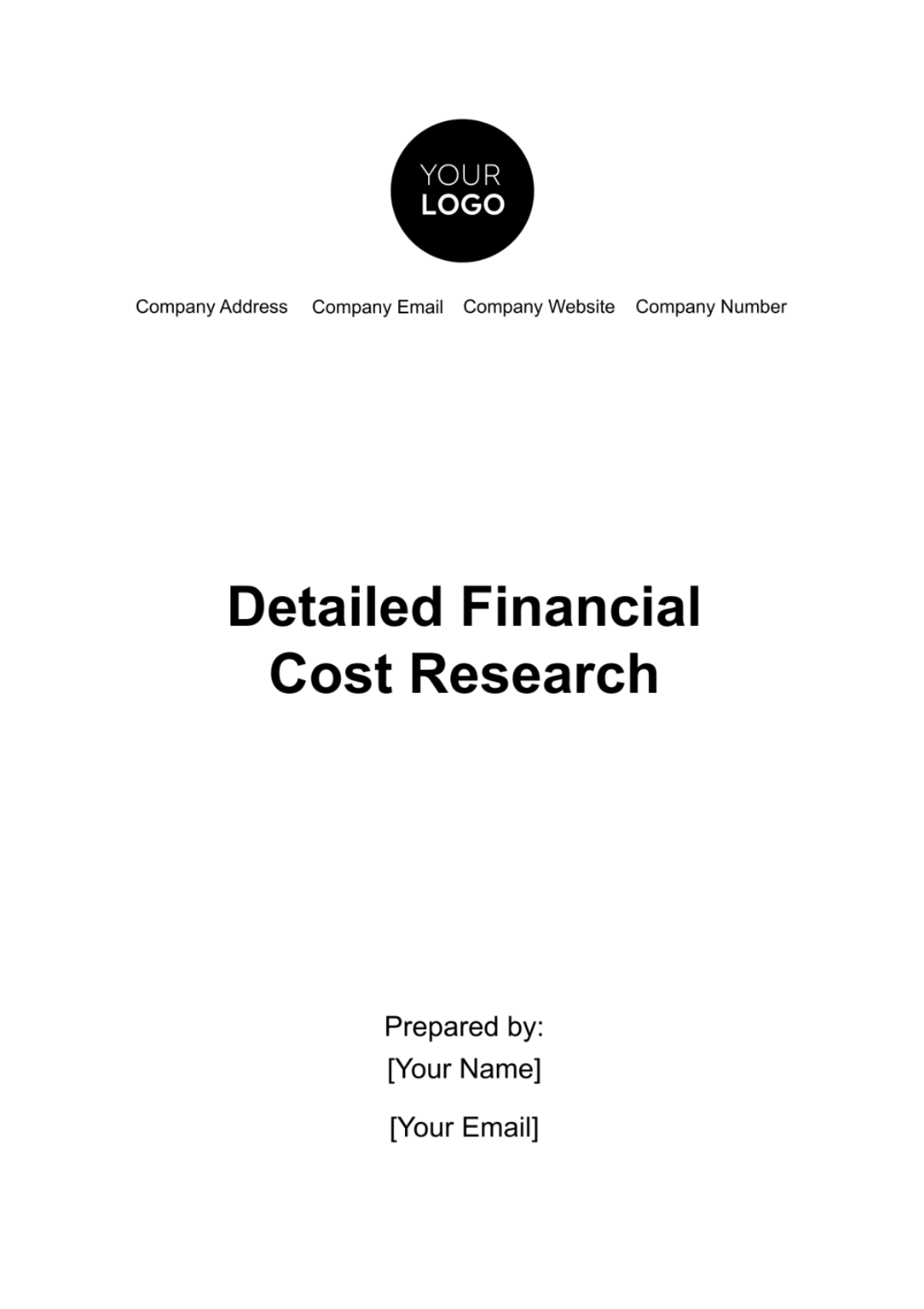
Introduction
This research presents an in-depth analysis of the financial costs experienced by our company, focusing on the years 2050 and beyond. It identifies and scrutinizes various cost factors that significantly impact our financial health. By dissecting direct and indirect financial costs, this report aims to provide strategic insights for more effective financial management and decision-making, ensuring the company's long-term profitability and sustainability in a rapidly evolving economic environment.
Overview of Financial Costs
Financial costs are a pivotal aspect of our company's overall financial health. These costs encompass all expenditures and losses related to our financial activities, including but not limited to, interest payments on debts, investment losses, and opportunity costs. This section aims to categorize and analyze these costs, providing a clear view of how they impact the company's financial statements and overall fiscal strategy.
Definition of Financial Costs
Financial costs represent the monetary expenses incurred by our company in its financial operations. These include:
Interest Expenses: Payments made on borrowed funds, such as loans and bonds.
Investment Losses: Losses incurred in the company's investment portfolio.
Opportunity Costs: The cost of foregone alternatives when a particular financial route is chosen.
Foreign Exchange Losses: Costs due to fluctuations in currency exchange rates, particularly relevant for our international operations.
Fees and Charges: Various fees related to financial transactions, including bank fees, transaction fees, and financial advisory fees.
Importance of Managing Financial Costs
The management of financial costs is critical in preserving the company's profitability and ensuring its competitive edge in the market. High financial costs can erode profits, reduce investment capabilities, and limit growth potential. Effective management involves:
Regular Monitoring: Keeping a close eye on interest rates, investment performance, and other financial cost drivers.
Strategic Financing: Choosing the right mix of equity and debt to finance operations and expansions.
Risk Management: Implementing hedging strategies to mitigate financial risks like currency fluctuations.
Cost-Benefit Analysis: Evaluating the long-term impact of financial decisions on the company’s cost structure.
Overview Table of Financial Costs (2050-2055)
This table presents an overview of the primary financial costs incurred by the company over a span of five years, providing a clear picture of trends and changes in financial cost components.
Year | Interest Expenses | Investment Losses | Opportunity Costs | Foreign Exchange Losses | Fees and Charges |
2050 | $2,500,000 | $1,000,000 | $750,000 | $300,000 | $150,000 |
2051 | $2,700,000 | $1,200,000 | $800,000 | $350,000 | $175,000 |
2052 | $2,900,000 | $1,100,000 | $850,000 | $400,000 | $200,000 |
2053 | $3,000,000 | $1,250,000 | $900,000 | $450,000 | $225,000 |
2054 | $3,200,000 | $1,300,000 | $950,000 | $500,000 | $250,000 |
2055 | $3,400,000 | $1,400,000 | $1,000,000 | $550,000 | $275,000 |
The data in this table underscores the increasing trend in financial costs, highlighting the need for strategic interventions to manage these costs effectively. The subsequent sections will delve deeper into each cost category, analyzing their origins and proposing strategies for optimization and control.
Analysis of Direct Financial Costs
Direct financial costs are explicit costs that the company incurs in its financial operations. They are direct outflows of cash and have a clear and measurable impact on the company’s financial statements. This section focuses on the major components of direct financial costs, primarily interest expenses and loan-related fees.
Interest Expenses
Interest expenses are a significant part of our direct financial costs. They arise from various forms of debt, including bank loans, bonds, and other borrowing instruments. As we expand our operations and investments, understanding and managing these costs is crucial for financial stability.
Yearly Interest Expense Analysis
The following table illustrates the breakdown of our interest expenses from 2050 to 2055. It categorizes the expenses into loans and bonds, providing a clear view of our debt structure and interest obligations.
Year | Interest on Loans | Interest on Bonds | Total Interest Expenses |
2050 | $1,500,000 | $1,000,000 | $2,500,000 |
2051 | $1,600,000 | $1,100,000 | $2,700,000 |
2052 | $1,700,000 | $1,200,000 | $2,900,000 |
2053 | $1,800,000 | $1,200,000 | $3,000,000 |
2054 | $1,900,000 | $1,300,000 | $3,200,000 |
2055 | $2,000,000 | $1,400,000 | $3,400,000 |
This table indicates a steady increase in both loan and bond interest payments, reflecting our growing reliance on debt financing. The rising trend necessitates strategies for debt management and cost control.
Loan-Related Fees
In addition to interest expenses, loan-related fees are a significant component of our direct financial costs. These fees include origination fees, processing charges, and early repayment penalties. While often smaller than interest expenses, they can add up and impact our financials.
Loan Fee Analysis
The following analysis provides an overview of the various loan-related fees incurred by the company.
Origination Fees: These are upfront fees charged by lenders for processing a new loan application. They typically range from 0.5% to 1% of the total loan amount.
Processing Charges: These fees cover the administrative costs of managing the loan. They can vary significantly depending on the lender and the complexity of the loan.
Early Repayment Penalties: These are charges incurred if the loan is paid off before the end of its term. While they can be a cost saver in terms of reduced interest payments, they need to be carefully weighed against potential penalties.
Table of Loan-Related Fees (2050-2055)
Year | Origination Fees | Processing Charges | Early Repayment Penalties | Total Fees |
2050 | $50,000 | $30,000 | $20,000 | $100,000 |
2051 | $55,000 | $35,000 | $25,000 | $115,000 |
2052 | $60,000 | $40,000 | $30,000 | $130,000 |
2053 | $65,000 | $45,000 | $35,000 | $145,000 |
2054 | $70,000 | $50,000 | $40,000 | $160,000 |
2055 | $75,000 | $55,000 | $45,000 | $175,000 |
The increasing trend in loan-related fees is evident from the table, underscoring the need for careful negotiation of loan terms and conditions. Minimizing these fees through strategic financing decisions can significantly reduce the company's overall financial costs.
Analysis of Indirect Financial Costs
Indirect financial costs, unlike direct costs, are not immediately apparent in financial transactions but have a significant impact on the company's financial health. This section delves into the two primary components of indirect financial costs: opportunity costs and depreciation & amortization.
Opportunity Costs
Opportunity costs represent the potential benefits the company misses out on when choosing one alternative over another. These are critical in financial decision-making, especially when allocating resources between various investment options.
Opportunity Cost Analysis
Capital Allocation Decisions: When the company allocates capital to one project over another, it potentially misses out on the profits that could have been generated by the alternative project.
Liquidity Considerations: Maintaining a high level of liquidity for safety can result in lower returns compared to investing that capital in higher-yielding assets.
Debt vs. Equity Financing: Choosing debt over equity financing (or vice versa) impacts the company's cost structure and growth opportunities.
The following hypothetical scenarios illustrate the opportunity costs for the years 2050 to 2055:
Year | Chosen Investment | Foregone Investment | Estimated Opportunity Cost |
2050 | Project A | Project B | $500,000 |
2051 | High Liquidity | Market Investment | $600,000 |
2052 | Debt Financing | Equity Issue | $550,000 |
2053 | Project C | Project D | $650,000 |
2054 | Equity Financing | Debt Instruments | $700,000 |
2055 | Low-Risk Bonds | High-Risk Stocks | $750,000 |
This table shows the estimated opportunity costs associated with each major financial decision. It highlights the importance of strategic decision-making in minimizing opportunity costs.
Depreciation and Amortization
Depreciation and amortization are methods of allocating the cost of tangible and intangible assets over their useful lives. Though not direct cash outflows, they represent the wearing out, consumption, or other reduction in the value of assets over time.
Depreciation and Amortization Schedule
The following table details the annual depreciation and amortization for major assets from 2050 to 2055:
Asset | Cost | Lifespan | Annual Depreciation | Cumulative Depreciation (2050-2055) |
Machinery A | $1,000,000 | 10 years | $100,000 | $600,000 |
Software B | $500,000 | 5 years | $100,000 | $500,000 |
Vehicle C | $200,000 | 5 years | $40,000 | $240,000 |
This table provides an insight into how asset depreciation and amortization affect the company's financial statements over time. It underscores the need to factor in these costs when planning investments and evaluating the company's financial performance.
Conclusion on Indirect Costs
Indirect financial costs, though not always evident in daily transactions, play a crucial role in the company’s financial planning and strategy. Understanding and managing these costs is essential for accurate financial reporting and effective financial decision-making. The opportunity costs associated with different decisions underline the importance of thorough analysis and strategic thinking in financial management. Similarly, accounting for depreciation and amortization ensures that the company's financial statements accurately reflect the value and cost of its assets over time.
Portfolio Management and Financial Cost
Portfolio management plays a pivotal role in shaping the company's financial costs. It involves making informed decisions about investment mix and policy, matching investments to objectives, asset allocation, and balancing risk against performance. This section examines the impact of portfolio management decisions on financial costs and explores strategies to optimize these costs.
Impact of Portfolio Decisions on Financial Costs
Portfolio decisions directly influence the financial costs in several ways:
Risk Exposure: The level of risk associated with the investment portfolio can significantly impact potential financial costs, particularly in terms of potential losses or lower-than-expected returns.
Asset Allocation: The distribution of investments across various asset classes (e.g., stocks, bonds, real estate) affects the company's exposure to different types of financial costs.
Liquidity Needs: Portfolio decisions must account for the company's liquidity requirements. Investments that are too illiquid can increase costs in terms of opportunity loss or liquidation losses.
Portfolio Composition Analysis (2050-2055)
The following table illustrates the changes in the company's portfolio composition over a six-year period and its impact on financial costs:
Year | Equity % | Bonds % | Real Estate % | Alternative Investments % | Estimated Financial Cost Impact |
2050 | 40% | 30% | 20% | 10% | $1,200,000 |
2051 | 35% | 35% | 20% | 10% | $1,300,000 |
2052 | 30% | 40% | 20% | 10% | $1,250,000 |
2053 | 25% | 45% | 20% | 10% | $1,100,000 |
2054 | 20% | 50% | 20% | 10% | $1,000,000 |
2055 | 20% | 50% | 25% | 5% | $950,000 |
This table shows a gradual shift from equity to bonds and real estate, reflecting a strategy to reduce risk and volatility in the portfolio. The decreasing estimated financial cost impact over the years indicates the effectiveness of this strategy in managing financial costs.
Strategies for Minimizing Financial Costs
To minimize financial costs associated with the investment portfolio, the company can employ several strategies:
Diversification: Spreading investments across various asset classes to reduce risk and the impact of any single investment on the overall portfolio.
Active Management: Regularly reviewing and adjusting the portfolio to respond to market changes and optimize returns.
Risk Assessment: Continuously assessing the risk profile of the portfolio and making adjustments to align with the company's risk tolerance and financial goals.
Cost-Benefit Analysis: Evaluating the costs and potential benefits of each investment decision to ensure they align with the company's long-term financial objectives.
Conclusion on Portfolio Management
Effective portfolio management is crucial for balancing the trade-off between risk and return, which directly impacts financial costs. By carefully managing the investment portfolio, the company can optimize its financial performance, reduce potential losses, and achieve a more stable financial footing. The strategies outlined above are integral to achieving these objectives and ensuring the company's financial health in the long term.
Conclusion and Recommendations
This detailed research on the company's financial costs provides a comprehensive analysis of both direct and indirect financial expenses, as well as the impact of portfolio management decisions. The findings highlight the necessity of a strategic approach to financial cost management to enhance profitability and support long-term sustainability.
Summary of Findings
The analysis reveals several key insights:
Rising Interest Expenses: There is a consistent increase in interest expenses, which necessitates a review of the company's debt structure and financing strategies.
Significant Loan-Related Fees: Loan-related fees, while smaller in comparison to interest expenses, accumulate over time and impact the bottom line.
Opportunity Costs: The opportunity costs associated with investment decisions are substantial, underscoring the need for more rigorous analysis and strategic decision-making.
Depreciation and Amortization: These costs have a substantial impact on the financial statements, highlighting the importance of asset management.
Portfolio Management: The company's portfolio decisions have significantly influenced financial costs, with a gradual shift towards less volatile investment options proving beneficial.
Strategic Recommendations
Based on the findings, the following recommendations are proposed to optimize financial cost management:
Debt Restructuring: Explore opportunities for refinancing high-interest debt and consider more favorable loan terms to reduce interest expenses.
Negotiation of Loan Terms: Engage with financial institutions to negotiate lower loan-related fees.
Enhanced Investment Analysis: Implement a more rigorous process for evaluating investment opportunities to minimize opportunity costs. This includes a thorough market analysis and future revenue projection for each investment option.
Asset Lifecycle Management: Regularly review and manage the lifecycle of assets to optimize depreciation and amortization expenses.
Dynamic Portfolio Adjustment: Continue to adjust the investment portfolio dynamically, focusing on diversification and risk management. Regularly assess the risk-return profile of the portfolio and adjust the asset allocation to align with market conditions and the company’s financial goals.
Implementation Plan
To effectively implement these recommendations, the following steps are proposed:
Quarterly Financial Review: Conduct a comprehensive review of financial costs and portfolio performance every quarter.
Collaboration with Financial Experts: Engage with financial advisors and investment experts for insights on market trends and investment opportunities.
Employee Training: Provide training to the finance team on advanced financial analysis techniques and tools.
Stakeholder Engagement: Regularly update stakeholders on the company's financial strategies and performance.
Monitoring and Adjustment: Continuously monitor the implementation of these strategies and make necessary adjustments based on market conditions and company performance.
Final Thoughts
Managing financial costs is a dynamic and ongoing process. It requires a deep understanding of the company's financial landscape and a proactive approach to decision-making. By adopting these recommendations and continuously refining strategies, the company can enhance its financial health and secure its competitive position in the market.
- 100% Customizable, free editor
- Access 1 Million+ Templates, photo’s & graphics
- Download or share as a template
- Click and replace photos, graphics, text, backgrounds
- Resize, crop, AI write & more
- Access advanced editor
Conduct in-depth financial analyses with Template.net's Detailed Financial Cost Research Template. This editable, customizable template is designed for thorough investigation of financial expenditures. Ideal for researchers and financial analysts, it provides a structured approach to examining costs, uncovering hidden expenses, and identifying areas for financial improvement and cost reduction.


